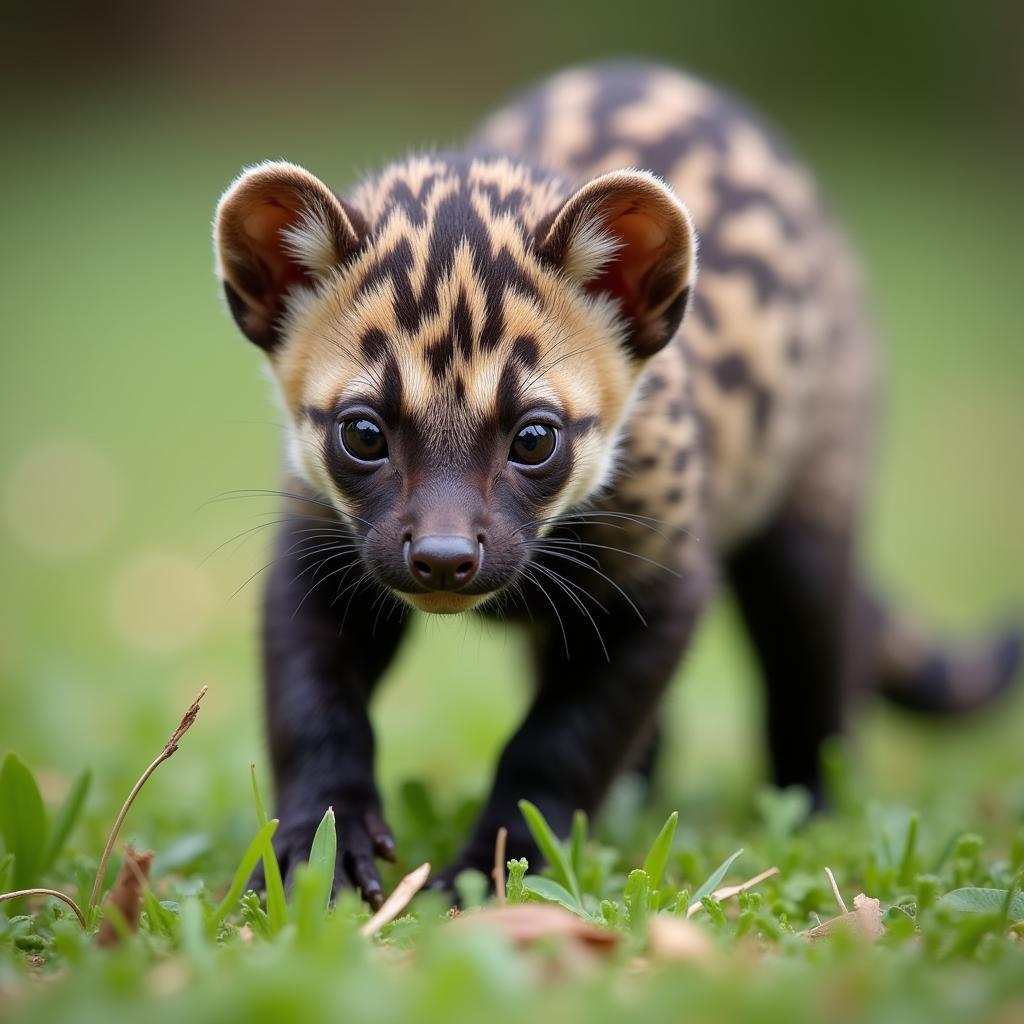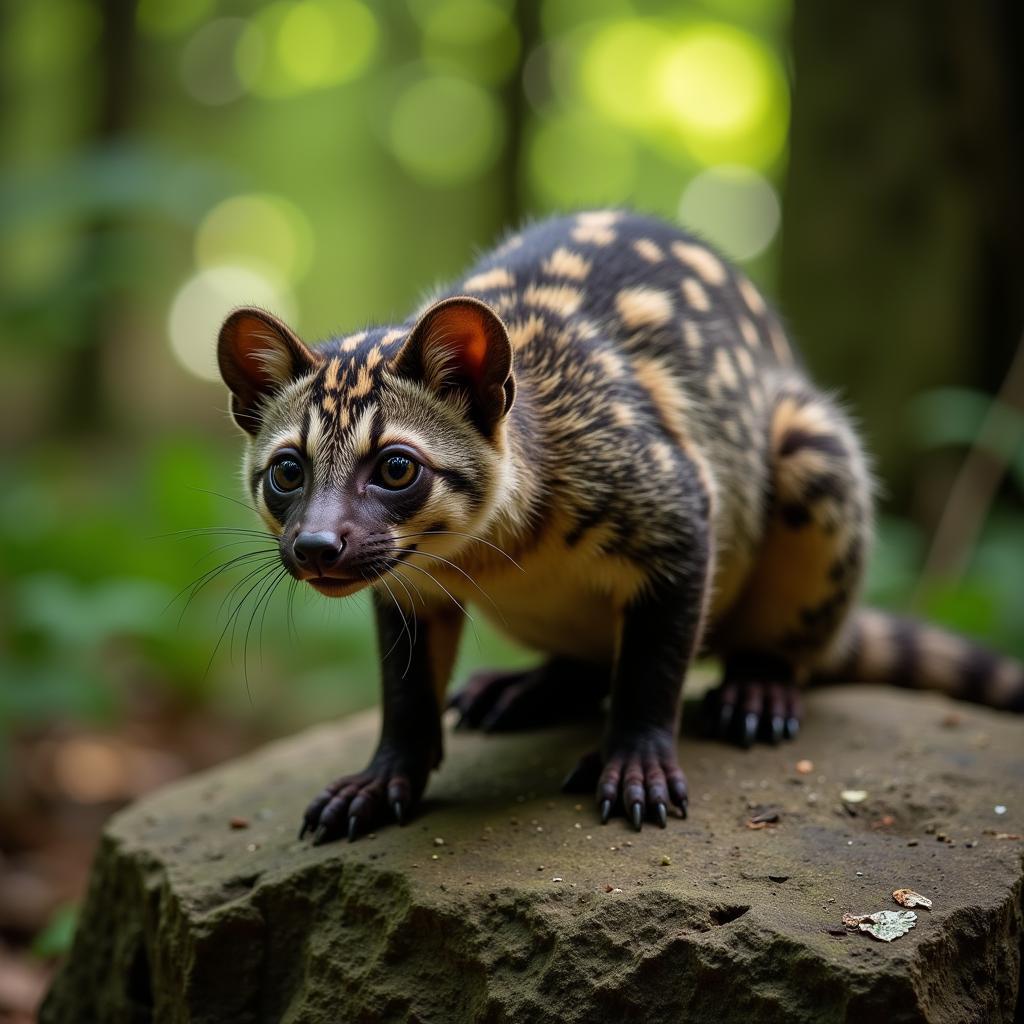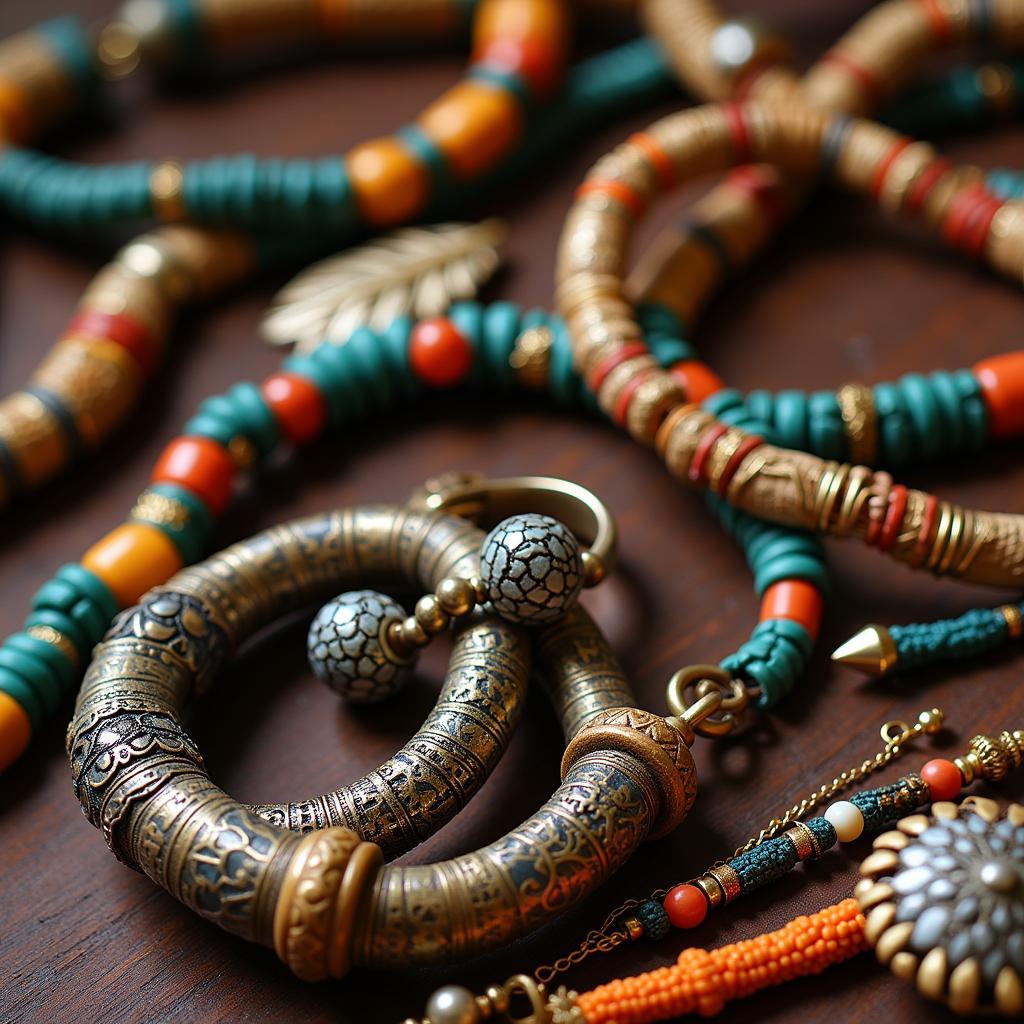African Civet Baby: A Glimpse into the World of These Misunderstood Creatures
African civet babies, with their spotted fur and endearing waddle, are a captivating sight. Often mistaken for large cats due to their markings, these creatures are actually more closely related to mongooses and weasels. In this article, we’ll delve into the fascinating world of African civet babies, exploring their development, diet, and the threats they face.
 African Civet Baby Exploring
African Civet Baby Exploring
The Early Life of an African Civet Baby
Born blind and with a sparse coat of fur, African civet babies are entirely dependent on their mothers for the first few weeks of life. They typically weigh around 180-250 grams at birth and are nursed in dens, often hidden amongst rocks or in abandoned burrows. The mother’s milk is rich in nutrients, ensuring rapid growth in these young creatures.
One of the most fascinating aspects of African civet babies is their rapid development. Their eyes open within a mere 10-14 days, and by three weeks, they are already experimenting with solid food, brought to them by their dedicated mother.
Dietary Delights: What Does an African Civet Baby Eat?
As omnivores, African civets have a diverse palate, and this is reflected in the diet of their young. While mother’s milk forms the mainstay of their diet in the early weeks, they quickly transition to a combination of insects, small rodents, reptiles, fruits, and even eggs.
This diverse diet is not just about variety; it plays a crucial role in equipping the young civets with the nutrients they need for their development and survival in the wild.
Navigating Threats: The Challenges Faced by African Civet Babies
While the early weeks are spent in the relative safety of the den, life outside presents a number of challenges for African civet babies. Predation is a constant threat, with leopards, pythons, and large owls being their main predators.
However, habitat loss poses a significant and growing threat. Deforestation and human encroachment are increasingly pushing these creatures out of their natural homes, leading to a decline in their numbers.
Conservation Efforts: Protecting the Future of African Civets
Recognizing the threats facing African civets, conservation efforts are underway to protect these unique creatures. These efforts focus on habitat preservation, anti-poaching measures, and raising awareness about the importance of co-existing with these animals.
 African Civet in the Wild
African Civet in the Wild
By supporting these conservation initiatives, we can all play a role in ensuring that future generations can continue to marvel at the wonders of African civet babies.
Conclusion
African civet babies, with their endearing appearance and intriguing behaviors, offer a fascinating glimpse into the biodiversity of the African continent. Understanding their life cycle, dietary habits, and the threats they face is the first step in ensuring their survival. By supporting conservation efforts and promoting responsible interactions with wildlife, we can all contribute to a future where these unique creatures continue to thrive in the wild.

